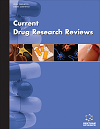
Full text loading...
We use cookies to track usage and preferences.I Understand
Chronic pain is a byproduct of many diseases and conditions. Along with long-term opioid medication use in chronic pain management, misuse of this vital medication has been a topic of much debate over the last two decades. Abuse-deterrent formulations play a critical role in comprehensive opioid risk management strategies, limiting the attractiveness and drug-liking qualities of an opioid drug by limiting their bioavailability, making abuse of the tampered opioid medication less appealing or rewarding, or impeding the extraction of the opioid drug and thus impeding the administration of the opioid formulation via alternative routes. The present article covers various regulatory actions, expectations in abuse-deterrent formulation approval, and emerging opioid abuse-deterrent formulation strategies, such as incorporating physical barriers, chemical barriers, aversion agents, pH modulating release properties, novel delivery systems, agonist/antagonist combinations, and prodrugs, as potential approaches to encountering the crisis of the opioid abuse epidemic. Looking at the severity of the opioid crisis across the globe now is the right time for various regulatory agencies to come under one roof to save society from the opioid epidemic, define the policy on how and when to prescribe opioid formulations to patients, perform abuse risk assessments, and make more efforts to approve only abuse-deterrent opioid medication.

Article metrics loading...

Full text loading...
References


Data & Media loading...

